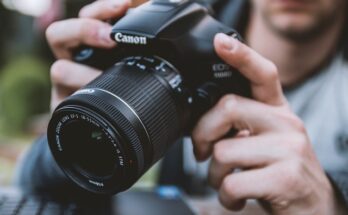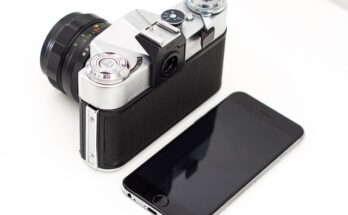In the world of photography, Exploring the Anatomy of a Camera: Understanding understanding the intricate details of your camera is akin to wielding a painter’s brush with mastery. Every component plays a vital role in capturing that perfect shot, weaving together a symphony of technology and artistry. Let’s embark on a journey through the anatomy of a camera, unraveling its key parts and functions.
Lens: The Window to the World
The lens is the eye of the camera, the gateway through which light enters to create an image. Its focal length determines the field of view and magnification, influencing the composition and perspective of your photographs. From wide-angle lenses capturing sweeping landscapes to telephoto lenses bringing distant subjects into sharp focus, each lens type offers a unique storytelling perspective.

Aperture: Controlling the Flow of Light
Situated within the lens, the aperture is like the pupil of the camera, regulating the amount of light that reaches the image sensor or film. Measured in f-stops, a lower f-stop corresponds to a wider aperture, allowing more light to pass through, ideal for low-light conditions or achieving a shallow depth of field for striking bokeh effects.
Shutter: Freezing Time in Fractions of a Second
The shutter is the gatekeeper of time, determining the duration of exposure to light. When you press the shutter button, it opens briefly to expose the sensor or film to incoming light, capturing a moment in time. Shutter speed, measured in fractions of a second, ranges from ultra-fast speeds for freezing action to longer exposures for creating dramatic motion blur.
Image Sensor: Transforming Light into Pixels
At the heart of digital cameras lies the image sensor, a silicon chip composed of millions of light-sensitive photodiodes called pixels. As light strikes the sensor, each pixel converts it into an electrical signal, which is then processed to create a digital image. The size and quality of the sensor directly impact image resolution, low-light performance, and dynamic range.
Viewfinder: Framing the Scene
Whether optical or electronic, the viewfinder serves as the photographer’s window to the world, allowing for precise composition and focus. Optical viewfinders utilize mirrors to reflect the scene directly to the eye, while electronic viewfinders display a digital preview based on the camera’s sensor output, often offering additional information overlays and real-time exposure simulation.
LCD Screen: Reviewing and Navigating
The LCD screen provides a digital canvas for reviewing and navigating through captured images, accessing camera settings, and composing shots in live view mode. With advancements in touchscreen technology, modern cameras offer intuitive interfaces for seamless operation and precise control over exposure, focus, and creative features.
Body: The Foundation of Functionality
The camera body houses and protects its internal components, providing ergonomic controls for intuitive operation and customization. From compact point-and-shoot cameras to professional DSLRs and mirrorless systems, each design caters to diverse shooting styles and preferences, ensuring comfort and versatility in the field.

Controls and Buttons: Tailoring the Shooting Experience
A myriad of buttons, dials, and switches adorn the camera body, offering quick access to essential functions such as exposure compensation, ISO sensitivity, autofocus modes, and shooting modes. Customizable buttons empower photographers to tailor their shooting experience, adapting to changing conditions and creative visions on the fly.
Battery and Memory Card: Powering and Storing Creativity
Behind every photograph lies the power source and storage medium, enabling the capture and preservation of fleeting moments. Rechargeable batteries provide the energy required to operate the camera, while memory cards serve as digital film, storing thousands of images and videos ready for review, editing, and sharing.
Conclusion
As we delve into the intricate anatomy of a camera, we uncover the synergy between technology and creativity, where each component plays a crucial role in shaping our photographic vision. From the lens capturing light to the sensor transforming it into pixels, and the body serving as a conduit of control and expression, every part contributes to the art of storytelling through imagery. Understanding these key components empowers photographers to unlock the full potential of their cameras, transcending technical barriers to unleash boundless creativity and imagination.



